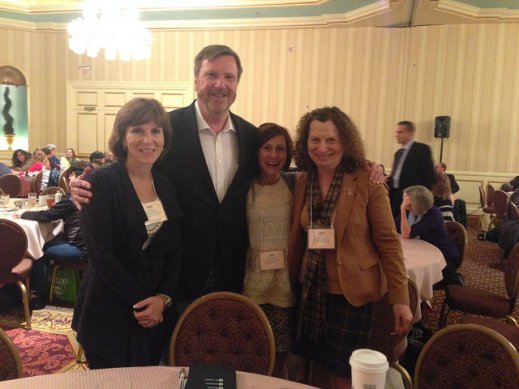“It is good to have an end to journey toward; but it is the journey that matters, in the end” Ursula K. Le Guin
A motivational background
When I first began my career as a teacher librarian, the school where I worked utilized a reading accountability tool called Accelerated Reader. After students finished reading a selected book, they took a recall based quiz and collected points meant to show how much they read. Awards were given to students who read “the most” during the school year.
I believe that authentic learning experiences, incorporating naturally occurring rewards and consequences, are not only respectful to students’ intelligence, but also foster their Habits of Mind development. Because enjoyment, understanding, empathy and fluency are natural effects of reading, the act of adding extrinsic and competitive aspects to the process, muddied students understanding of why reading, in and of itself, is rewarding. To this point, my most gratifying accomplishment that very first year, was convincing the school’s learning community to forego Accelerated Reader.
Game play for learning
I was introduced to the concept of game play for developing creative problem solving skills, through Chris Harris, who through an ALA grant, aligned popular board games to standards based curricular goals. While attending one of Chris’ workshops, I clearly remember the if/then, decision making proficiencies demonstrated as necessary, while participating in a simple iPad game we played together as a group. These were valuable skills, the value of which was highlighted, shamelessly, through my own inadequacy in achieving them!
Soon afterward, my colleague Matthew Winner, a proclaimed gamer himself, implemented Wii for to teaching Math skills in his K-5 library. Not only was I now aware of the possibilities of game play for developing higher order thinking skills, but I also saw that video games, for our students anyway, were a “somewhat” real, (albeit virtual), world learning experience, since students were already utilizing these platforms at home and on their own. With this in mind, I added XBox 360 and Minecraft to our library’s programming, and worked with a colleague to incorporate Scratch and Gamestar Mechanic into her Critical Thinking class curriculum. I had no clue what I was doing, never playing or creating a video game myself, but that was OK, the kids took control of their own learning.
From game play to gamification
Inspired by Jane McGonigal’s book, Reality is Broken, Matthew Winner, with another teacher-librarian colleague, Jennifer LaGarde, created the Level Up Book Club, which was meant as a platform for exploring and participating in game play and gamification for student and professional learning. Personally, I found myself uncomfortable with the competitive aspects of leveling up, and so, I became more curious about the motivational aspects of game play. I read, (most of), Jane McGonigal’s book, and although she argues, with valid reasoning and evidence, that gamers do not play to win and that gamifying is an intrinsically motivating process for effectively achieving a variety of goals, I wasn’t totally convinced. When the Level Up Book Club Community began discussing gamifying student reading, I was torn; memories of Accelerated Reader and my convictions about authentic learning, intrinsic motivation and even the use of grades in schools as creating an overly competitive and adverse learning environment, obstructed my ability to advocate for gamification as a motivational tool for learning.
Badging in the library
When Mozilla developed the concept of badging, as a way for students to account for their accomplishments outside of academic learning, I saw this as a great opportunity for non-traditional, out-of-the-box learners, to show what they know. I’ve always seen the library as a “third” space where students are encouraged to pursue their passions and interests and are inspired to find their element, however, the reality is that they are too often consumed with proving their worth- academics, sports and activities which “count” on college applications. Although I want for the learning to be enough, in and of itself, Badging could serve as a bridge between interest and accountability.
These thoughts however are more applicable in a High School, College or even public library setting; I did try using badges to account for makerspace learning in the middle school library, however I found that it was a time consuming and unnecessary process. Kids are motivated to Make, with or without badges!
Badging for PD
Laura Fleming created Worlds of Learning as a means for both inspiring and documenting evidence based professional development practices. What I love about Laura’s creation is that it supports choice and individual teacher needs and proficiencies, while inspiring participation in independent, time of need professional learning and implementation in the classroom. I’ve heard that teachers, in schools using badging for PD, proudly exhibit their badges to share their accomplishments; and yes, it can become a bit competitive.
Gamification for mastery
I am keenly aware of my personal bias against extrinsic motivational practices, but realize too, that part of my sentiment may stem from my personal distaste for competitive activities; I most often don’t like to, nor want to, compete. However, I am also keenly aware, that I am not whom I teach; witness Kahoot being used in the classroom, and it’s hard to deny the possibilities for engagement generated through competition. That being said, gamification in education seems more about personal accountability for mastery, similar to my shared examples of badging, rather than a process meant for promoting competition and extrinsic rewards. I like that students become acutely responsible for their actions, choose a personal path for achieving goals and are able to move at a pace which meets their individual readiness needs. I do fear, however, that the journey, the being in the moment experience of learning, may be lost with too great an emphasis on achieving the goal.




